-
CATEGORY ::
- All Seeds /
- All Flower Seeds /
- All Primrose Seeds
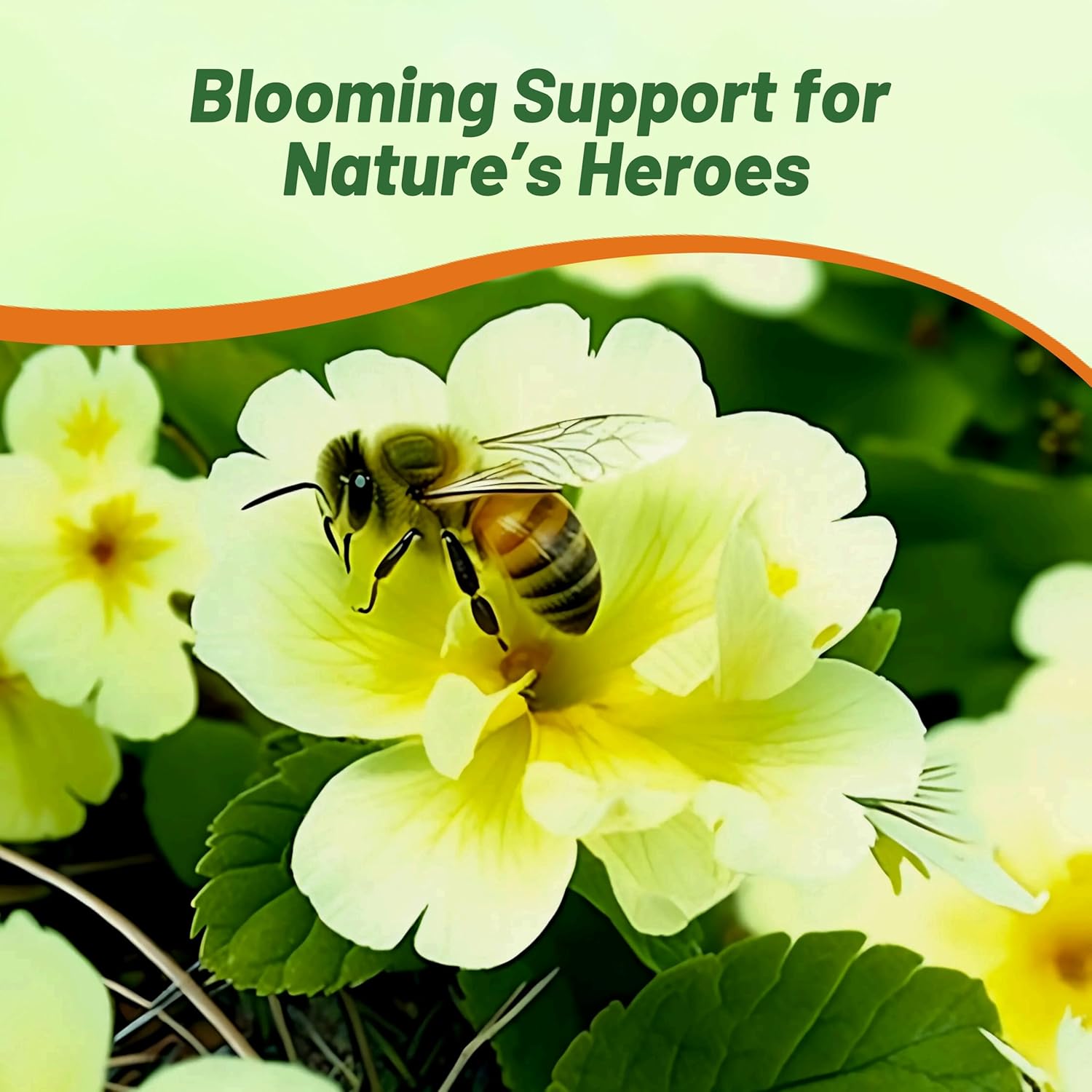

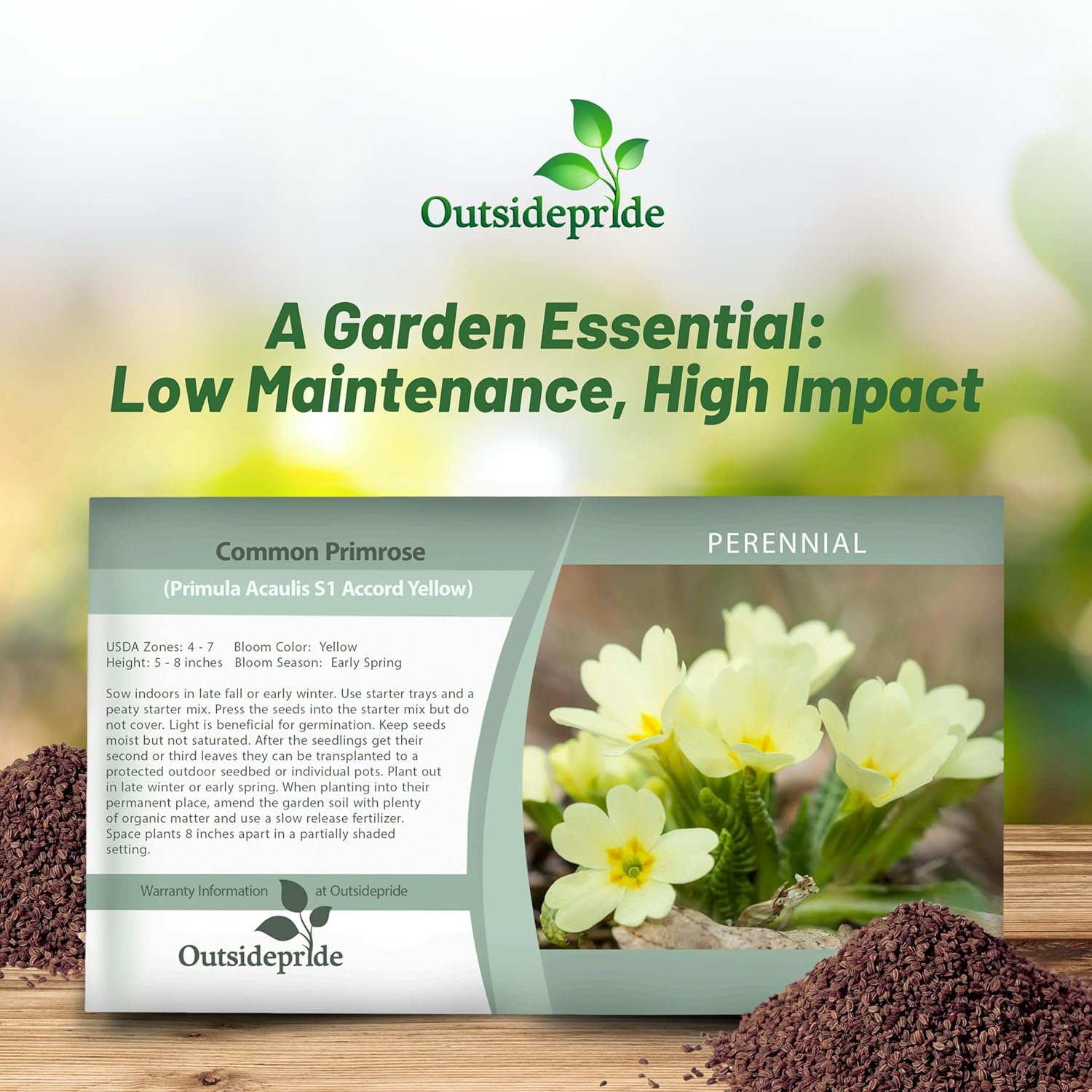
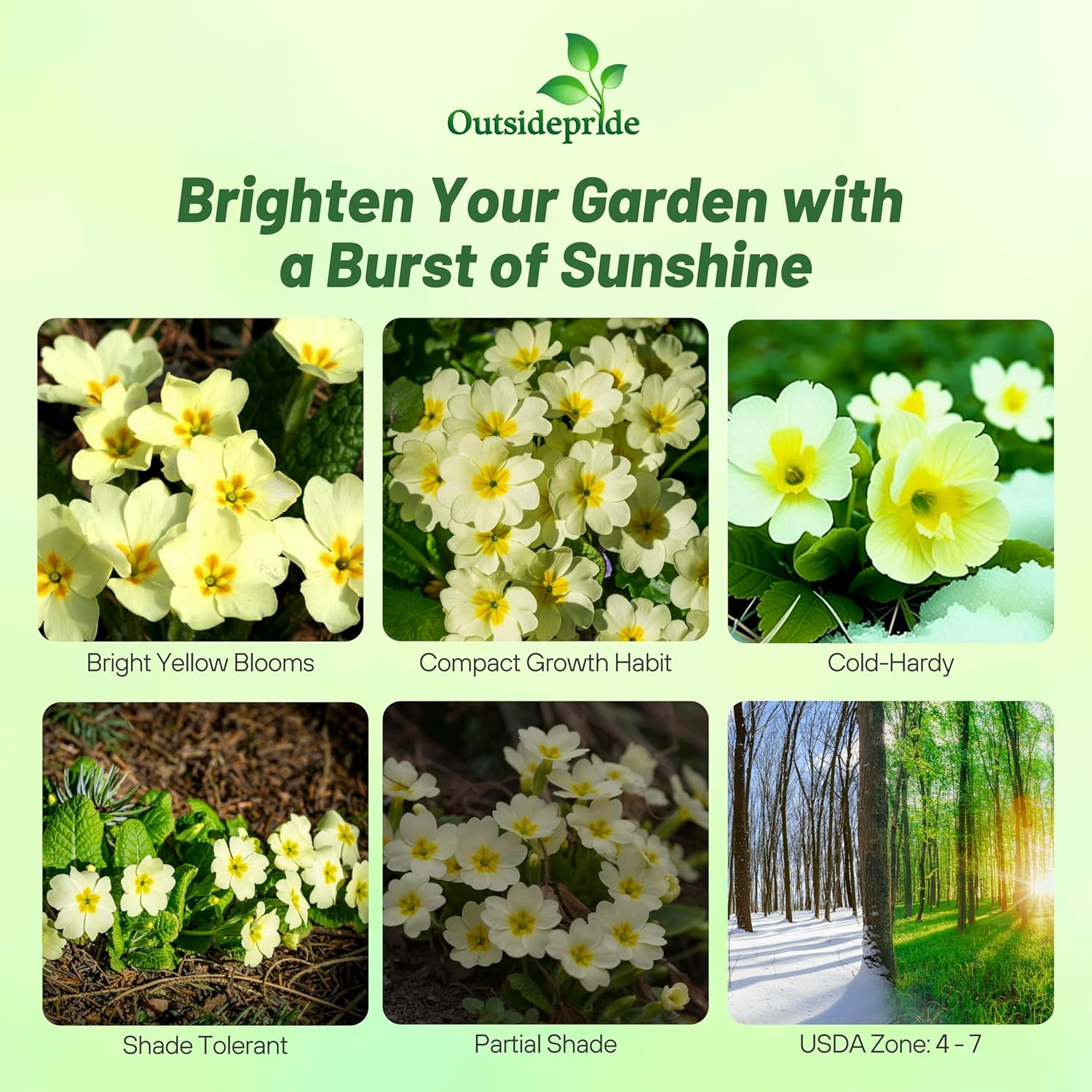
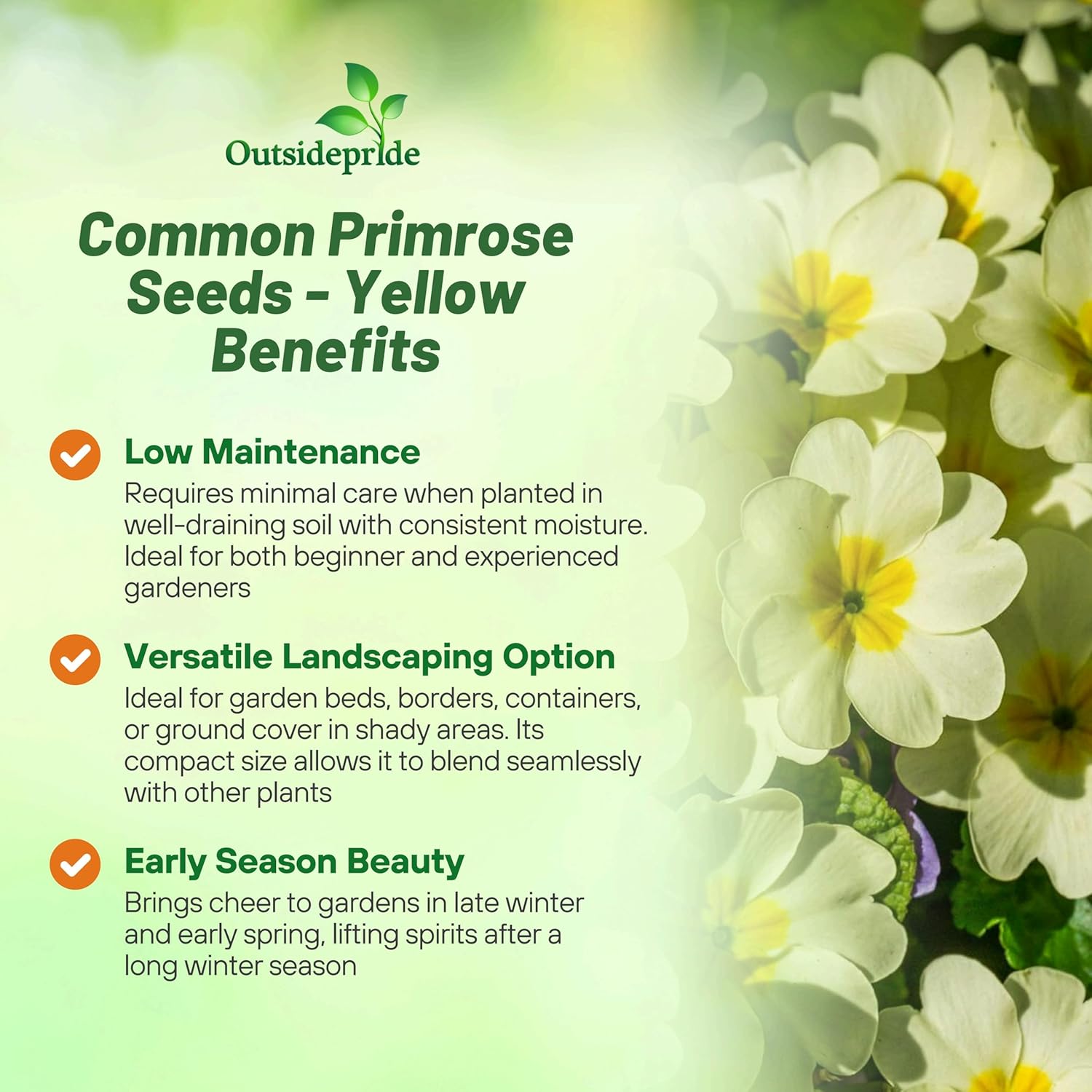

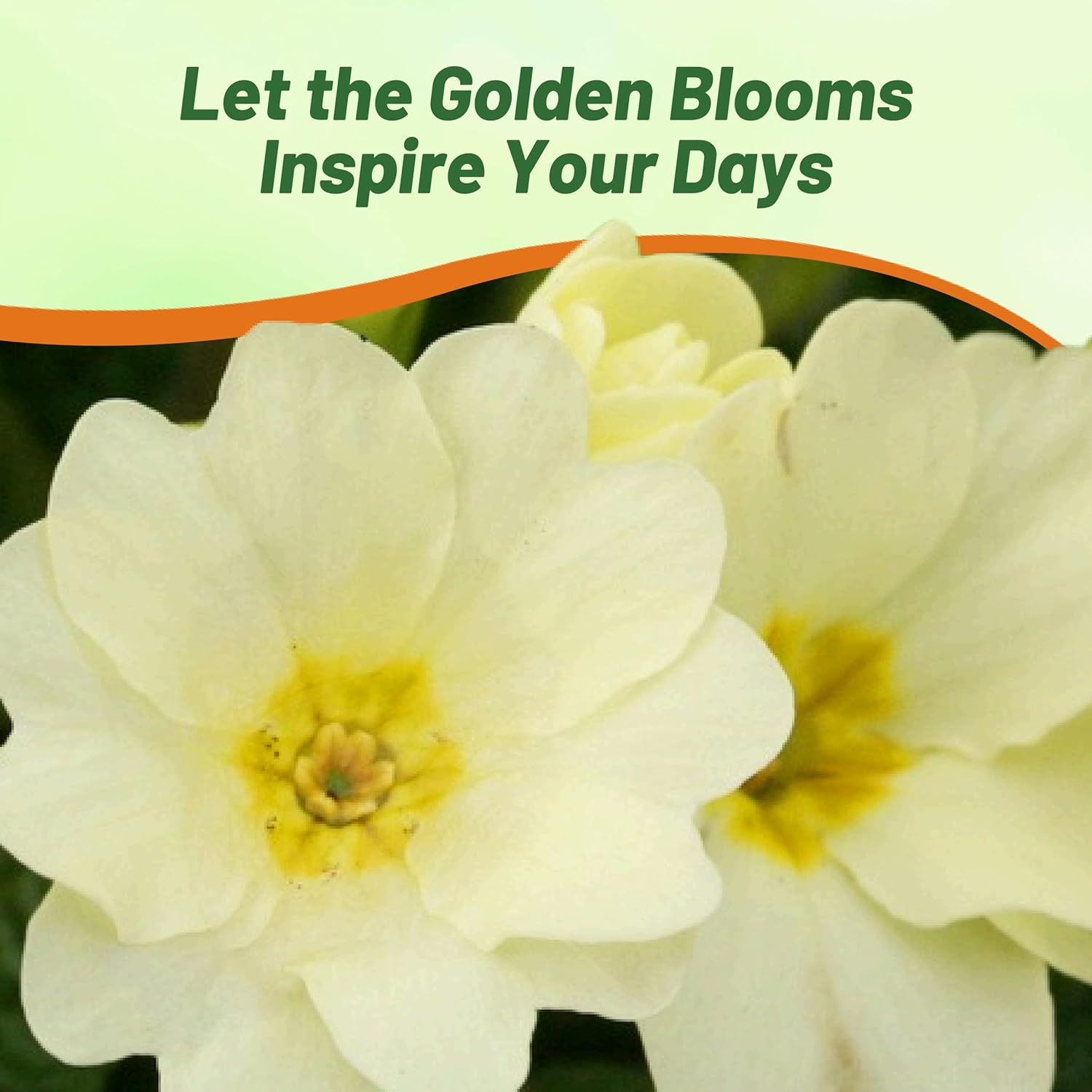

Common Primrose Seeds - Yellow
SEASON
Perennial
USDA ZONES
4 - 7
HEIGHT
5 - 8 inches
BLOOM SEASON
Early spring
BLOOM COLOR
Yellow
ENVIRONMENT
Partial shade
SOIL TYPE
Humus rich, pH 6.0 - 7.2
DEER RESISTANT
Yes
HOUSE PLANT
No
SEEDS PER POUND
864,000
SEASON
Annual
USDA ZONES
3 - 9
HEIGHT
24 - 48 inches
BLOOM SEASON
Mid to late summer
BLOOM COLOR
Yellow
ENVIRONMENT
Full sun
SOIL TYPE
Well-drained, pH 5.5 - 7.0
DEER RESISTANT
Yes
SEASON
Annual
USDA ZONES
4 - 8
HEIGHT
6 inches
BLOOM SEASON
Fall & Winter
BLOOM COLOR
Pink
ENVIRONMENT
Full sun to partial shade
SOIL TYPE
Humus rich, pH 6.0 - 7.2
DEER RESISTANT
Yes
HOUSE PLANT
No
SEASON
Annual
USDA ZONES
4 - 8
HEIGHT
5 - 6 inches
BLOOM SEASON
Winter, early Spring
BLOOM COLOR
Purple
ENVIRONMENT
Full sun to partial shade
SOIL TYPE
Humus rich, pH 6.0 - 7.2
DEER RESISTANT
Yes
HOUSE PLANT
No
SEASON
Annual
USDA ZONES
4 - 8
HEIGHT
5 - 6 inches
BLOOM SEASON
Winter, early Spring
BLOOM COLOR
Pink
ENVIRONMENT
Full sun to partial shade
SOIL TYPE
Humus rich, pH 6.0 - 7.2
DEER RESISTANT
Yes
HOUSE PLANT
No
SEASON
Annual
USDA ZONES
4 - 8
HEIGHT
5 - 6 inches
BLOOM SEASON
Winter, early Spring
BLOOM COLOR
Mix
ENVIRONMENT
Full sun to partial shade
SOIL TYPE
Humus rich, pH 6.0 - 7.2
DEER RESISTANT
Yes
HOUSE PLANT
No
SEASON
Annual
USDA ZONES
4 - 8
HEIGHT
8 - 10 inches
BLOOM SEASON
Late Winter, early Spring
BLOOM COLOR
Mix
ENVIRONMENT
Partial shade
SOIL TYPE
Humus rich, pH 6.0 - 7.2
SEASON
Annual
USDA ZONES
4 - 8
HEIGHT
4 - 6 inches
BLOOM SEASON
Fall & Winter
BLOOM COLOR
Yellow, Red
ENVIRONMENT
Full sun to partial shade
SOIL TYPE
Humus rich, pH 6.0 - 7.2
DEER RESISTANT
Yes
HOUSE PLANT
No
About...
Common Primrose (Primula Acaulis S1 Accord Yellow) - Nothing welcomes spring like a Primrose with its clear, beautiful color! They can easily be grown from Common Primrose seeds, and their performance and color makes them a favorite of many gardeners. This Primula Acaulis variety features small 1 inch blooms of pure yellow.
MORE PRIMROSE OPTIONS
Planting Directions
TEMPERATURE
60 - 65F
AVERAGE GERM TIME
21 - 30 days
LIGHT REQUIRED
Yes
DEPTH
Do not cover the seed but press into the soil
SOWING RATE
4 seeds per plant
MOISTURE
Keep seeds moist until germination
PLANT SPACING
8 inches
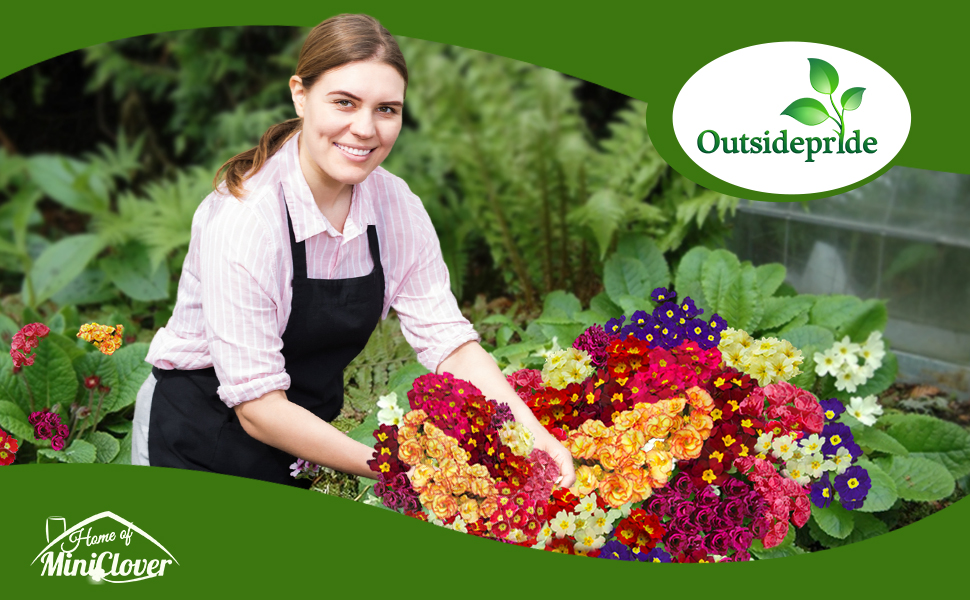
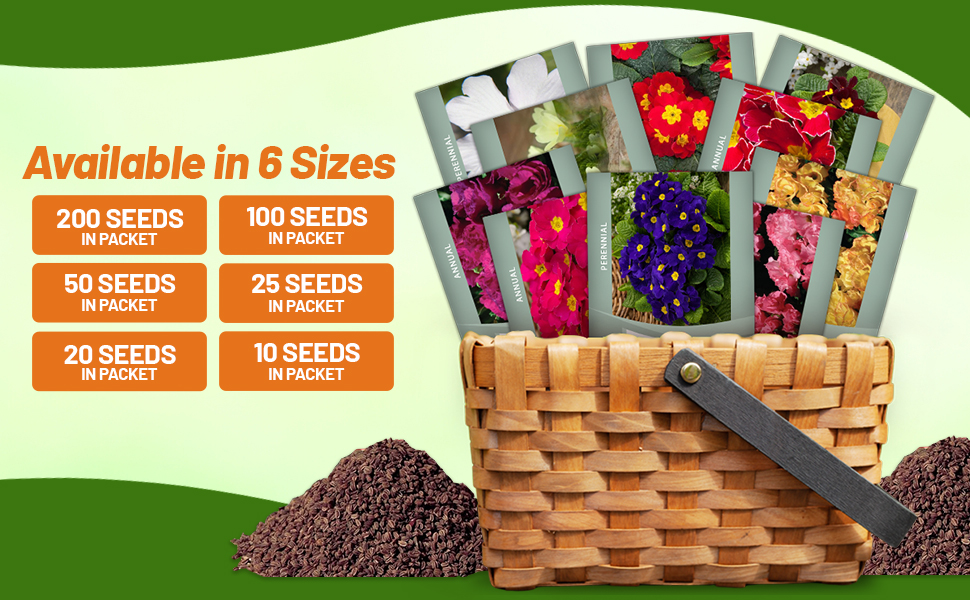
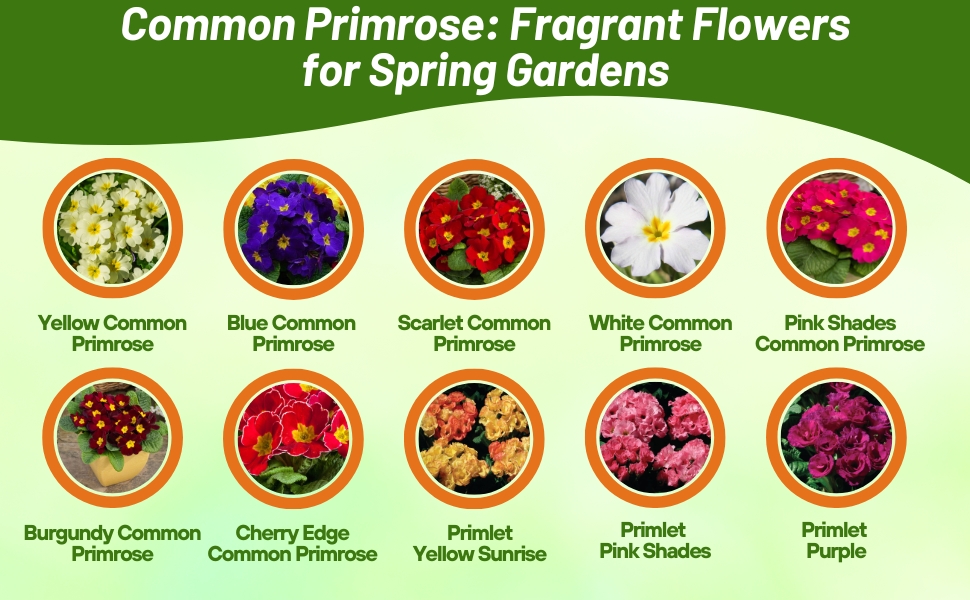
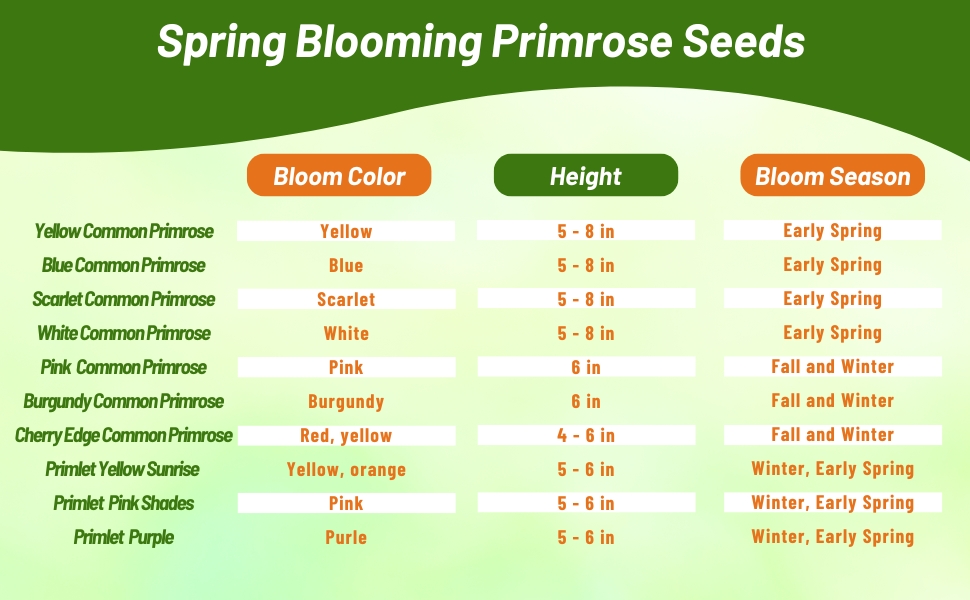
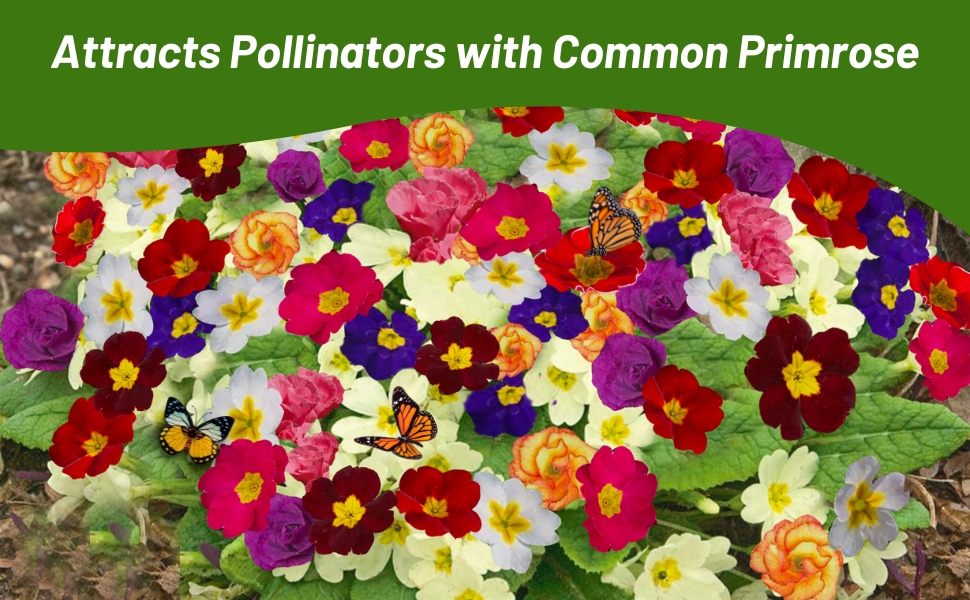
Common Primrose (Primula Acaulis S1 Accord Yellow) - Nothing welcomes spring like a Primrose with its clear, beautiful color! They can easily be grown from Common Primrose seeds, and their performance and color makes them a favorite of many gardeners. This Primula Acaulis variety features small 1 inch blooms of pure yellow. Common Primrose, also called English Primrose, are widely grown and marketed as bedding plants, potted house plants and container plants. A synonymous botanical name for English Primrose is Primula Vulgaris. Grow Primrose for some early spring color and enjoy their show!
Sow Common Primrose seeds indoors in late fall or early winter. Use starter trays and a peaty starter mix. Press the flower seeds into the starter mix but do not cover the Primrose seeds. Light is beneficial for germination. Keep Primrose seeds moist but not saturated. After the Primrose seedlings get their second or third leaves they can be transplanted to a protected outdoor seedbed or individual pots. Plant out in late winter or early spring. When planting Primrose Primula Acaulis plants into their permanent place, amend the garden soil with plenty of organic matter and use a slow release fertilizer. Space the Primrose plants 8 inches apart in a partially shaded setting.
Common Questions
What are good companion plants for primroses?
Your primroses will complement other shade garden plants like hostas and astilbe.
How long does a primrose plant live?
A primrose can thrive for up to five years with the right conditions.
Where should I place primroses in my house?
Your primrose plant requires bright yet indirect sunlight. Placing it on a bright windowsill facing north provides an ideal location.
Planting Directions
TEMPERATURE
65 - 70F
AVERAGE GERM TIME
15 - 30 days
LIGHT REQUIRED
Yes
DEPTH
1/16 inch
SOWING RATE
Plant this wildflower seed at 3 pounds per acre
MOISTURE
Keep seeds moist until germination
PLANT SPACING
18 - 24 inches
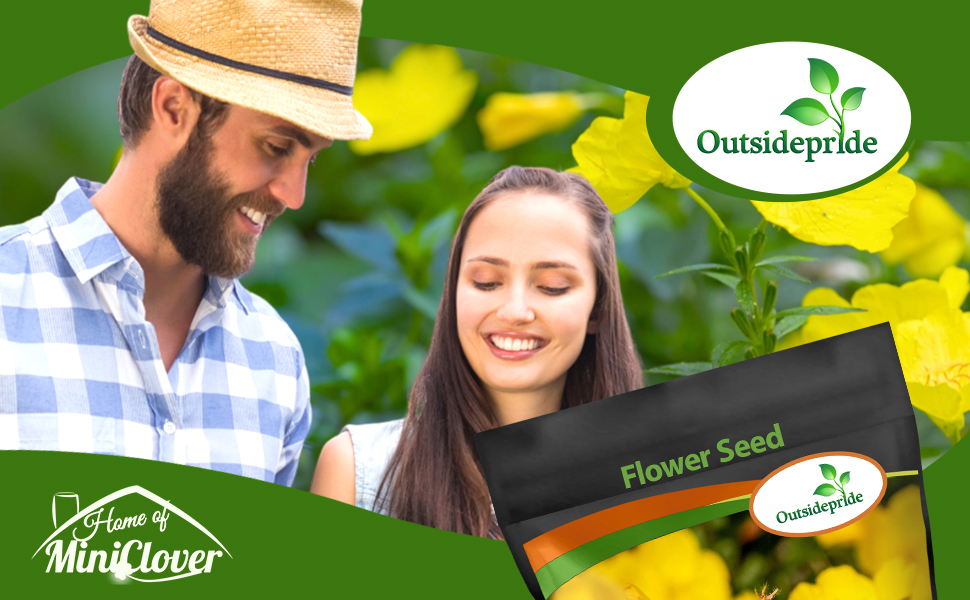

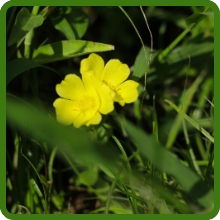
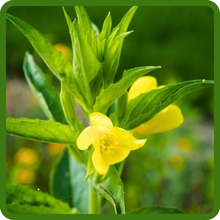
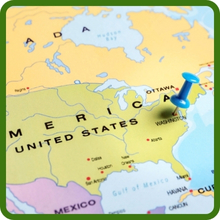
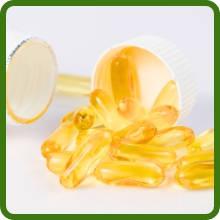
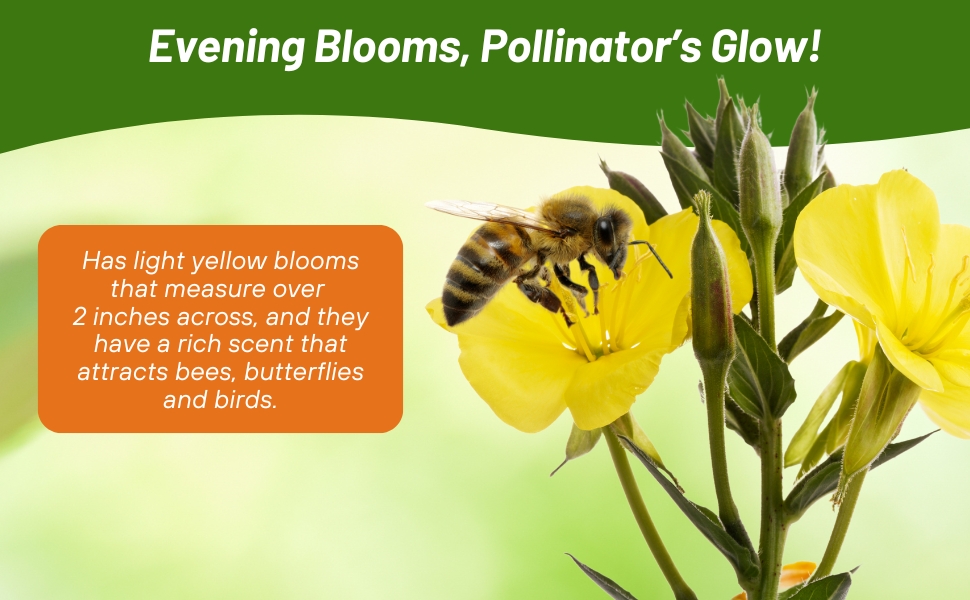

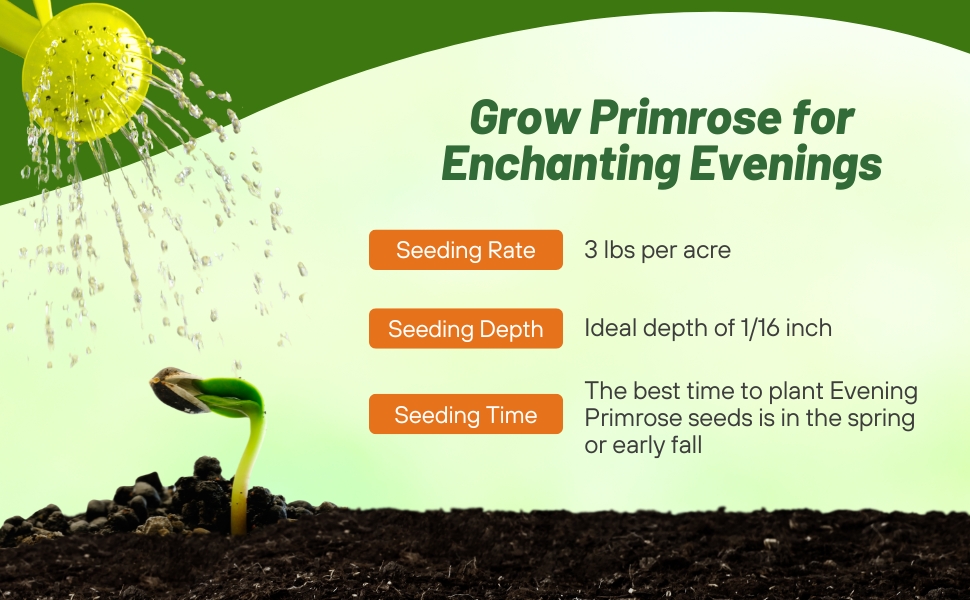
Evening Primrose (Oenothera Lamarckiana) - What a treasured wildflower that has naturalized throughout the United States. Evening Primrose is easily propagated from flower seed, and it does wonders when planted in a meadow or along a fence line. Oenothera Evening Primrose gets its name because it opens in the late afternoon and stays opened throughout the evening. It has light yellow blooms that measure over 2 inches across, and they have a rich scent that attracts bees, butterflies and birds.
Evening Primrose is an annual wildflower with a fairly short bloom period. Its flowers may be seen in May and June, with the peak being mid-May.They prefer a sunny area with well-drained soil. They are liberal self-sowers, spreading their own flower seed, so after they are done blooming cut back the plants to reduce spreading.
How To Grow Evening Primrose From Seed: To sow Evening Primrose seeds outdoors, prepare weed-free soil and loosen the top 1 - 2 inches. Spread the flower seed and rake them into the soil only lightly covering. Sow Oenothera Primrose seeds in early spring or late fall. Evening Primrose Flower Care: In the spring, before flowering, apply a compost as a fertilizer around the plants. After flowering, cut back the Primrose plants after blooming is done to reduce the spreading.
Common Questions
What are good companion plants for primroses?
Your primroses will complement other shade garden plants like hostas and astilbe.
How long does a primrose plant live?
A primrose can thrive for up to five years with the right conditions.
Where should I place primroses in my house?
Your primrose plant requires bright yet indirect sunlight. Placing it on a bright windowsill facing north provides an ideal location.
Planting Directions
TEMPERATURE
60 - 65F
AVERAGE GERM TIME
21 - 30 days
LIGHT REQUIRED
Yes
DEPTH
Do not cover the seed but press into the soil
SOWING RATE
4 seeds per plant
MOISTURE
Keep seeds moist until germination
PLANT SPACING
7 - 9 inches
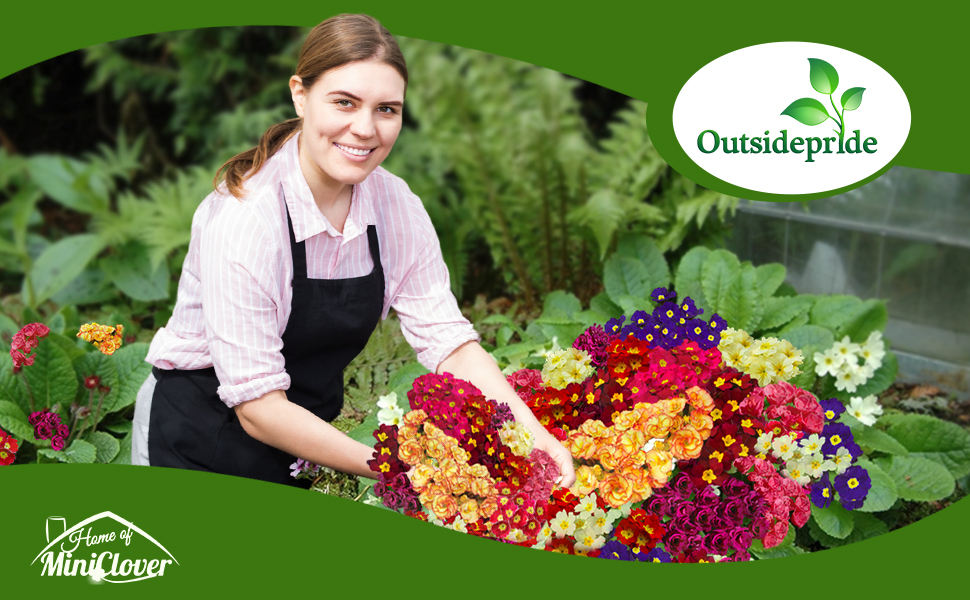
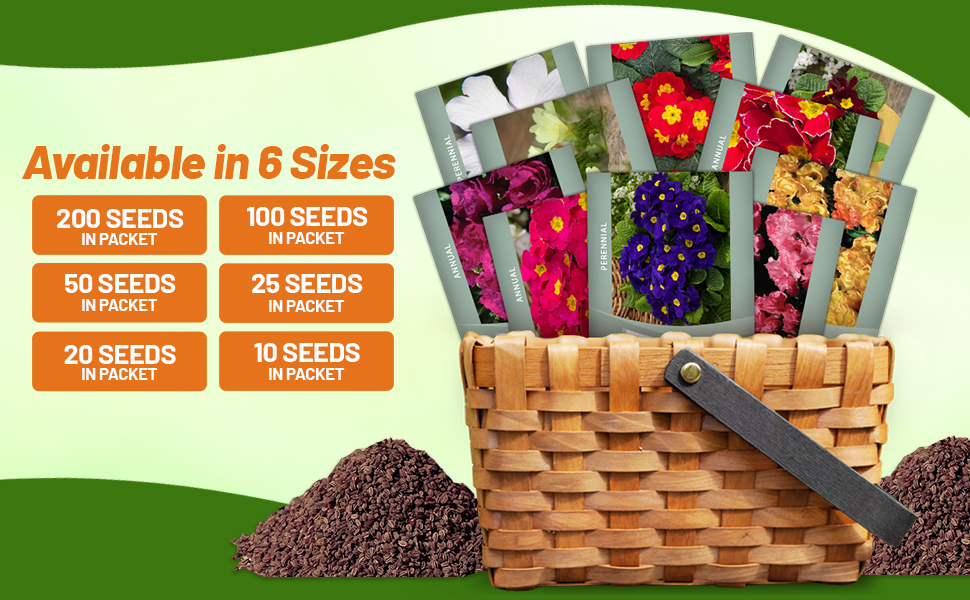
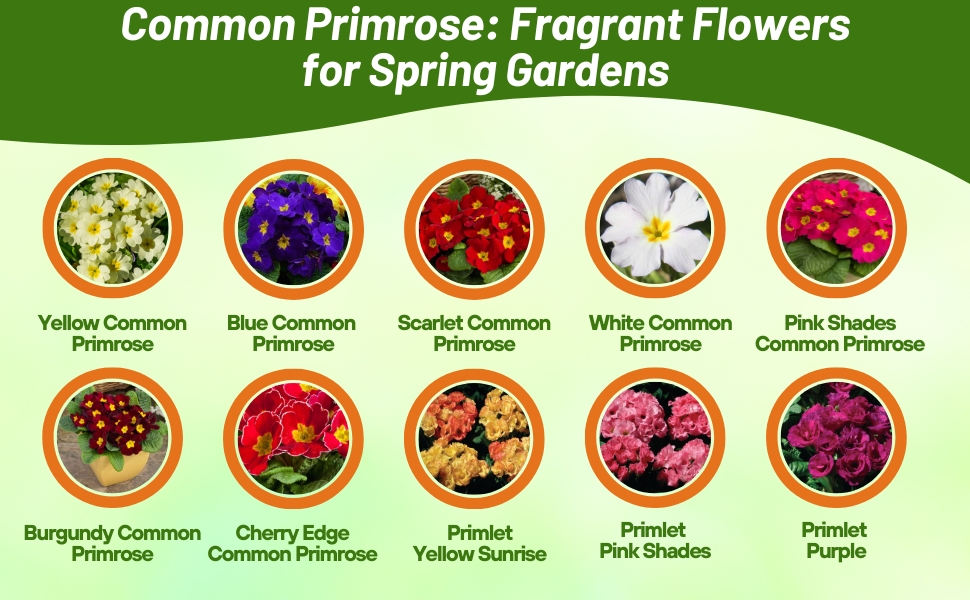
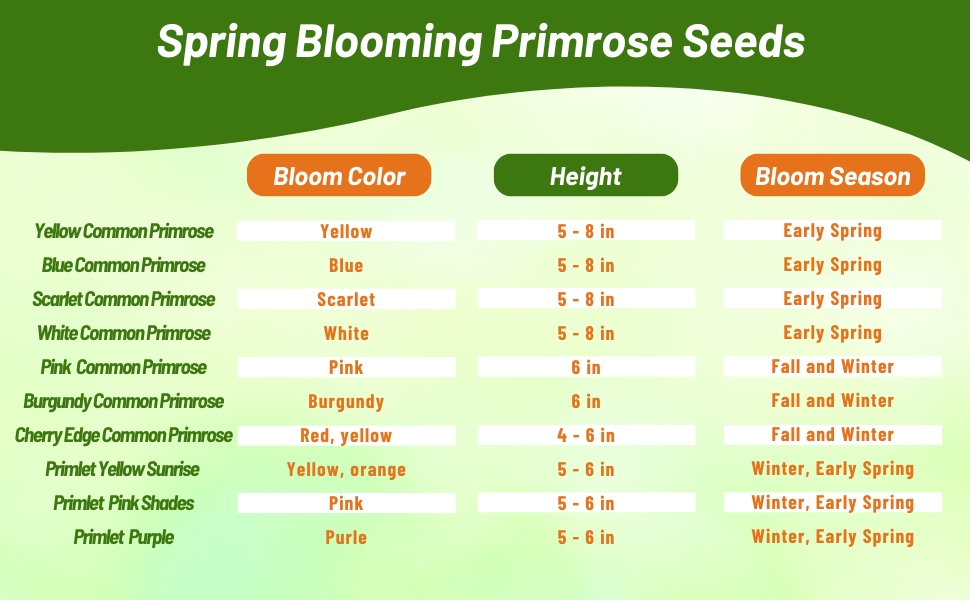

Common Primrose (Primula Acaulis Danessa Pink Shades) - Danessa is unique common primrose and this variety has brilliant pink flowers! A heat tolerant Primrose that is extra-early flowering and suitable for early Autumn flowering. Excellent plant habit and a good range of bright core colors, ideal for after Summer color in the gardens. It is the earliest flowing primrose grown from flower seeds.
Sow Primrose seeds indoors in late fall or early winter. Use starter trays and a peaty starter mix. Press the Primula Acaulis seeds into the starter mix but do not cover the flower seeds. Light is beneficial for germination. After the Primrose seedlings get their second or third leaves they can be transplanted to a protected outdoor seedbed or individual pots. Plant out in late winter or early spring. When planting Common Primrose into its permanent place, amend the garden soil with plenty of peat moss and use a slow release fertilizer. Space the Primrose plants 8 inches apart in a partially shaded setting.
Common Questions
What are good companion plants for primroses?
Your primroses will complement other shade garden plants like hostas and astilbe.
How long does a primrose plant live?
A primrose can thrive for up to five years with the right conditions.
Where should I place primroses in my house?
Your primrose plant requires bright yet indirect sunlight. Placing it on a bright windowsill facing north provides an ideal location.
Planting Directions
TEMPERATURE
60 - 65F
AVERAGE GERM TIME
21 - 30 days
LIGHT REQUIRED
Yes
DEPTH
Do not cover the seed but press into the soil
SOWING RATE
4 seeds per plant
MOISTURE
Keep seeds moist until germination
PLANT SPACING
5 - 9 inches

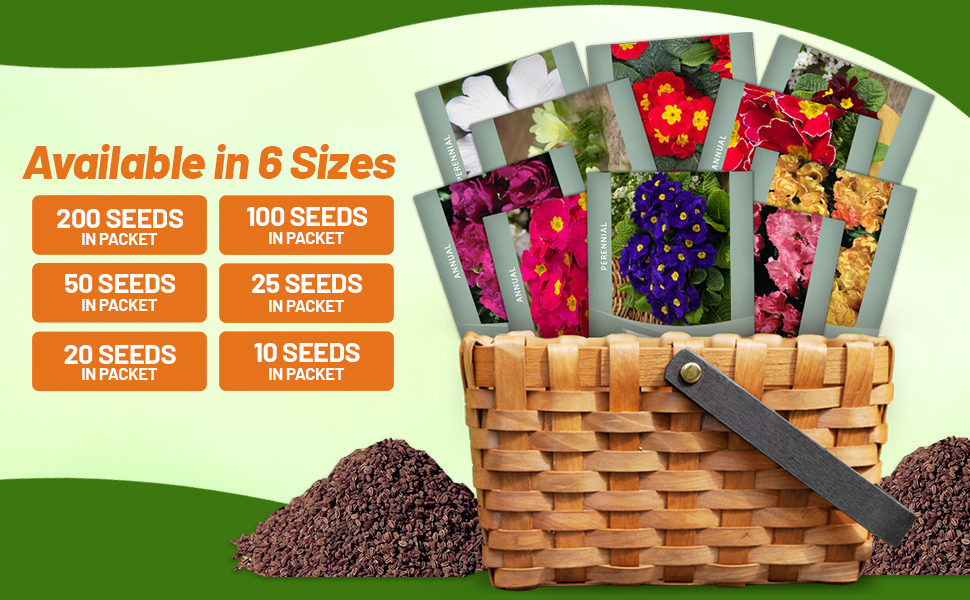
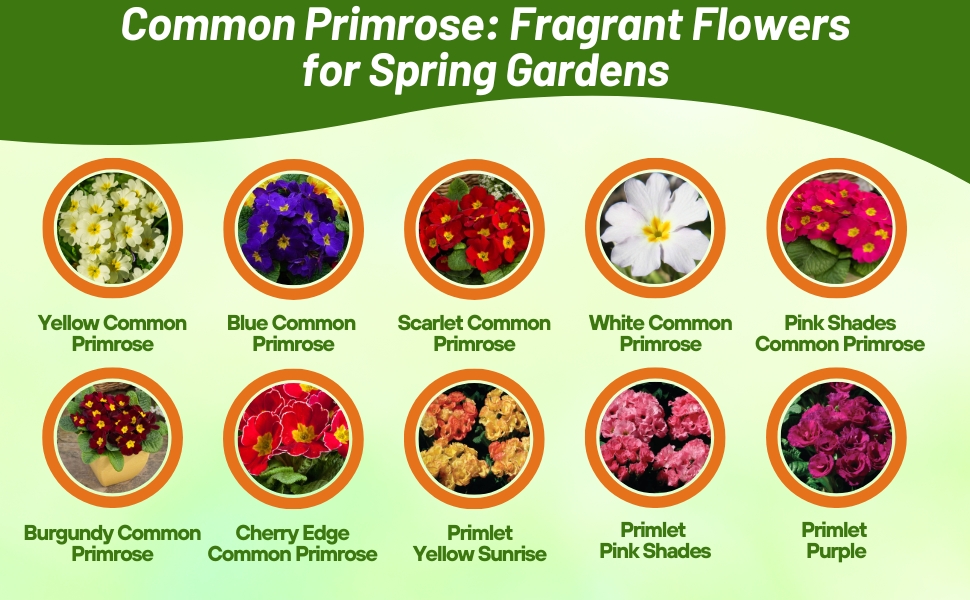
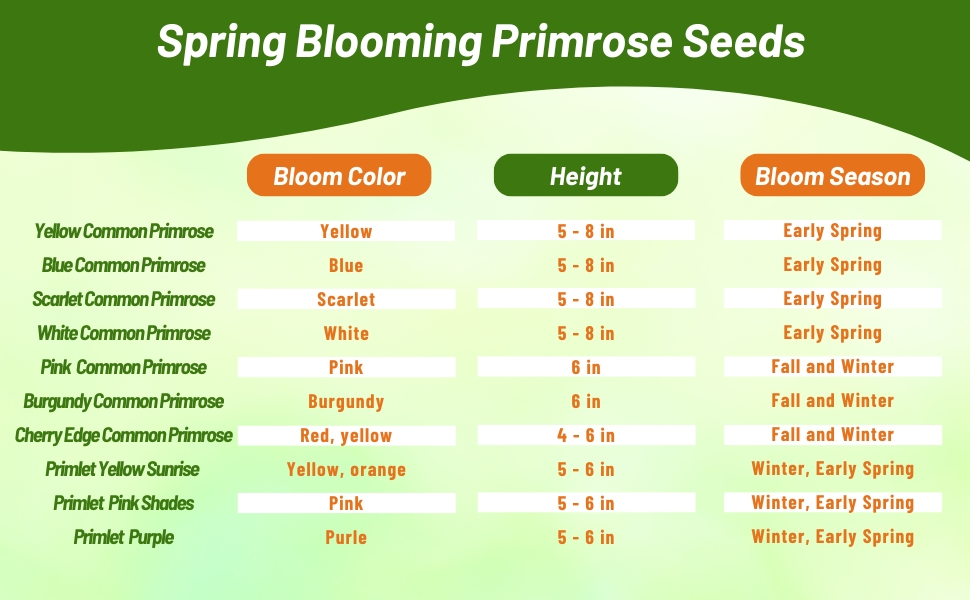
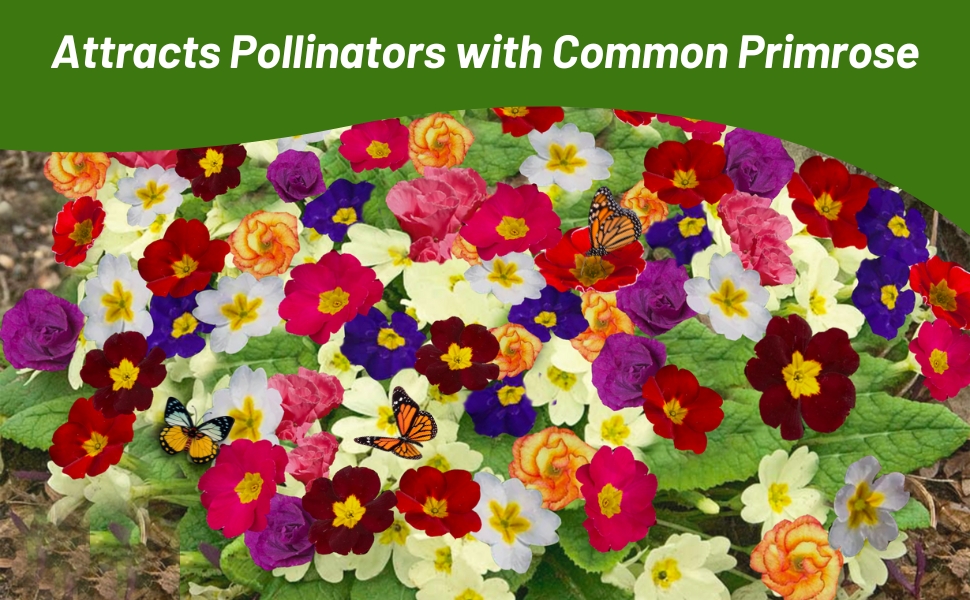
Common Primrose (Primula Acaulis Primlet Purple) - These mounded plants have purple flowers which look like bouquets of fragrant mini-roses with semi-double blooms. Long-lasting as an indoor house plant; otherwise, typically grown as an annual. Good for pots, borders, woodland settings, edges and windowsills. Low maintenance & frost tolerant and loves to attracts butterflies.
Sow Primrose seeds indoors in late fall or early winter. Use starter trays and a peaty starter mix. Press the Primula seeds into the starter mix but do not cover the flower seeds. Light is beneficial for germination. After the Primrose seedlings get their second or third leaves they can be transplanted to a protected outdoor seedbed or individual pots. Plant out in late winter or early spring. When planting German Primrose into its permanent place, amend the garden soil with plenty of peat moss and use a slow release fertilizer. Space the Primrose plants 8 inches apart in a partially shaded setting.
Common Questions
What are good companion plants for primroses?
Your primroses will complement other shade garden plants like hostas and astilbe.
How long does a primrose plant live?
A primrose can thrive for up to five years with the right conditions.
Where should I place primroses in my house?
Your primrose plant requires bright yet indirect sunlight. Placing it on a bright windowsill facing north provides an ideal location.
Planting Directions
TEMPERATURE
60 - 65F
AVERAGE GERM TIME
21 - 30 days
LIGHT REQUIRED
Yes
DEPTH
Do not cover the seed but press into the soil
SOWING RATE
4 seeds per plant
MOISTURE
Keep seeds moist until germination
PLANT SPACING
5 - 9 inches
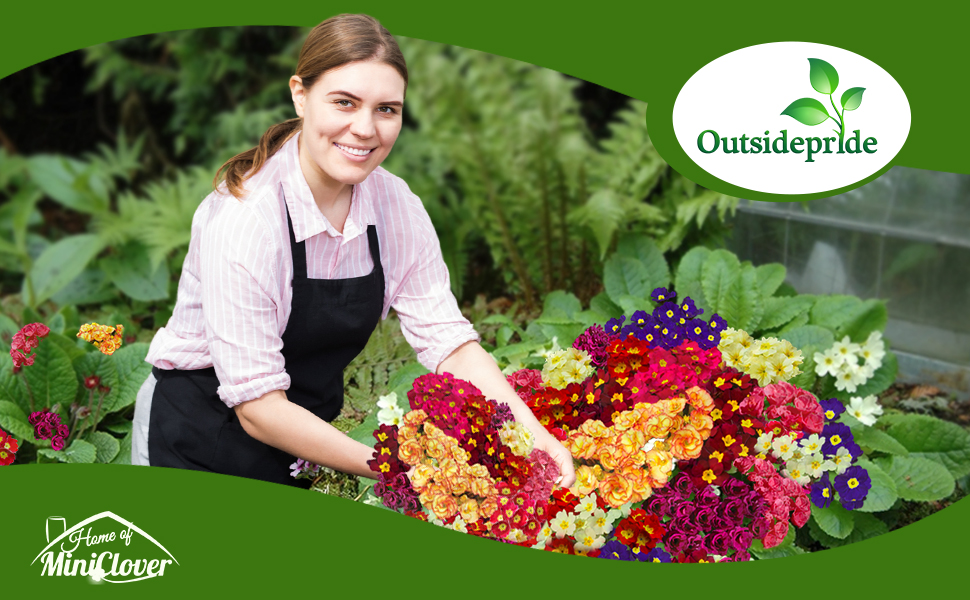
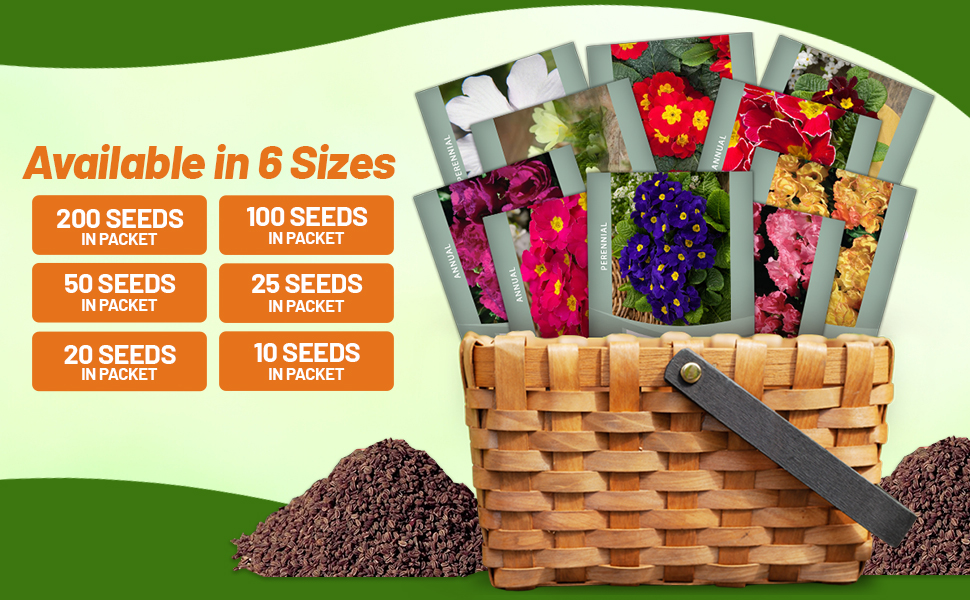
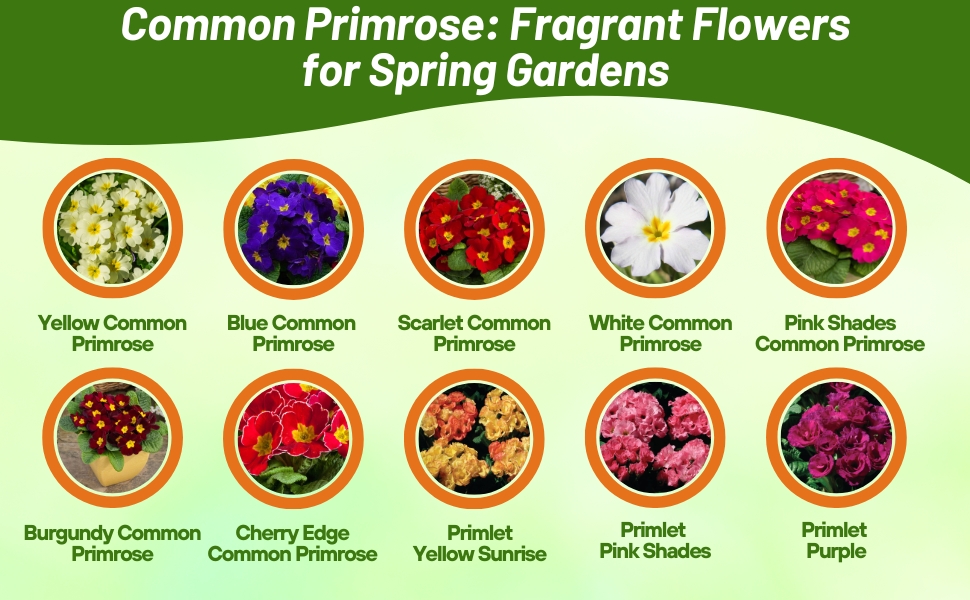
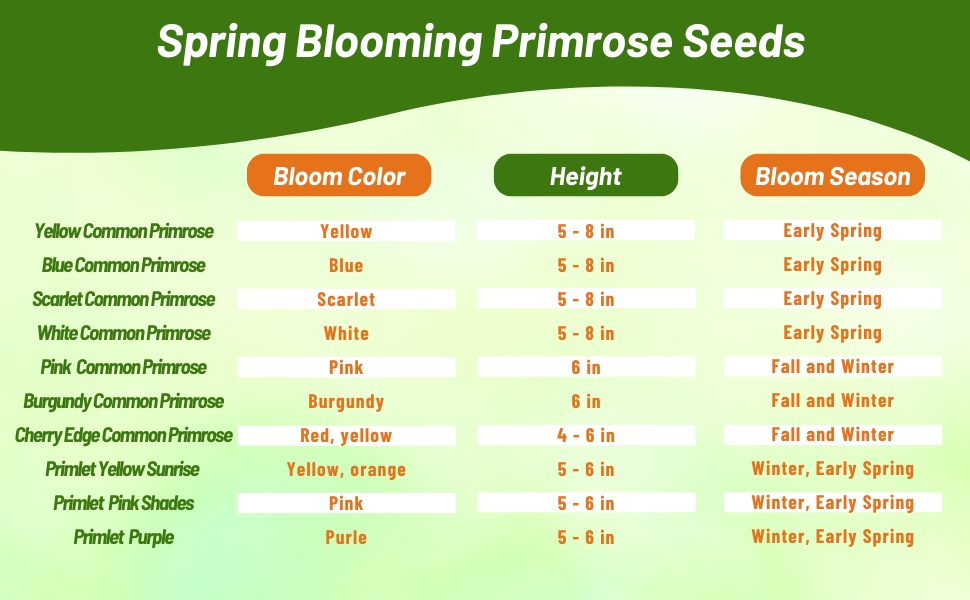
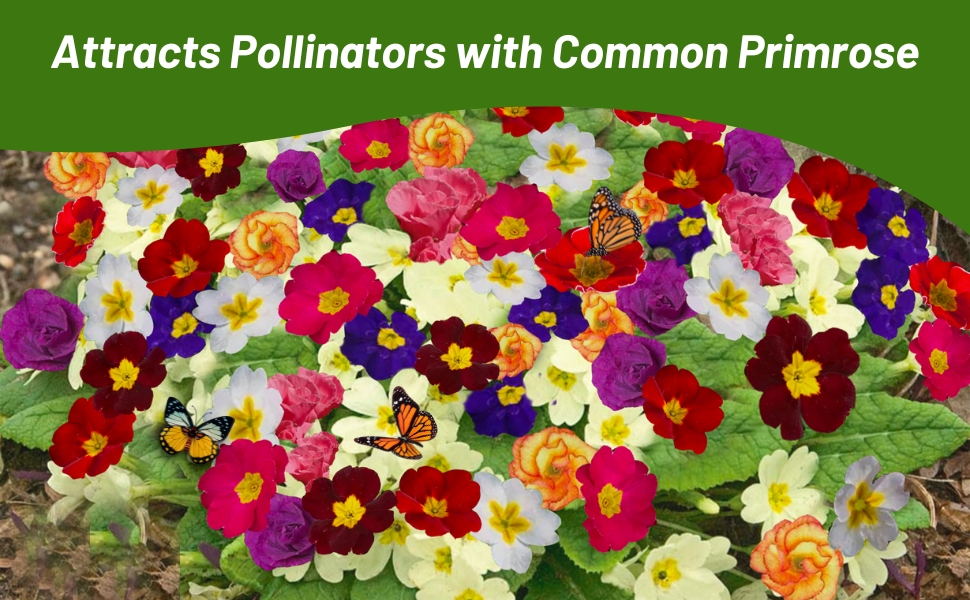
Common Primrose (Primula Acaulis Primlet Pink Shades) - These mounded plants have pink flowers which look like bouquets of fragrant mini-roses with semi-double blooms. Long-lasting as an indoor house plant; otherwise, typically grown as an annual. Good for pots, borders, woodland settings, edges and windowsills. Low maintenance & frost tolerant and loves to attracts butterflies.
Sow Primrose seeds indoors in late fall or early winter. Use starter trays and a peaty starter mix. Press the Primula seeds into the starter mix but do not cover the flower seeds. Light is beneficial for germination. After the Primrose seedlings get their second or third leaves they can be transplanted to a protected outdoor seedbed or individual pots. Plant out in late winter or early spring. When planting German Primrose into its permanent place, amend the garden soil with plenty of peat moss and use a slow release fertilizer. Space the Primrose plants 8 inches apart in a partially shaded setting.
Common Questions
What are good companion plants for primroses?
Your primroses will complement other shade garden plants like hostas and astilbe.
How long does a primrose plant live?
A primrose can thrive for up to five years with the right conditions.
Where should I place primroses in my house?
Your primrose plant requires bright yet indirect sunlight. Placing it on a bright windowsill facing north provides an ideal location.
Planting Directions
TEMPERATURE
60 - 65F
AVERAGE GERM TIME
21 - 30 days
LIGHT REQUIRED
Yes
DEPTH
Do not cover the seed but press into the soil
SOWING RATE
4 seeds per plant
MOISTURE
Keep seeds moist until germination
PLANT SPACING
5 - 9 inches
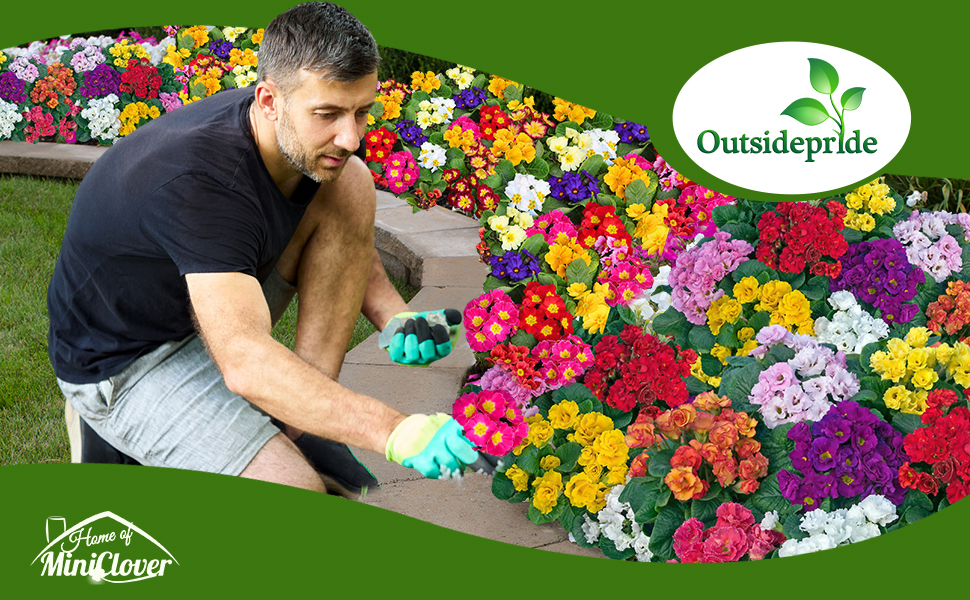
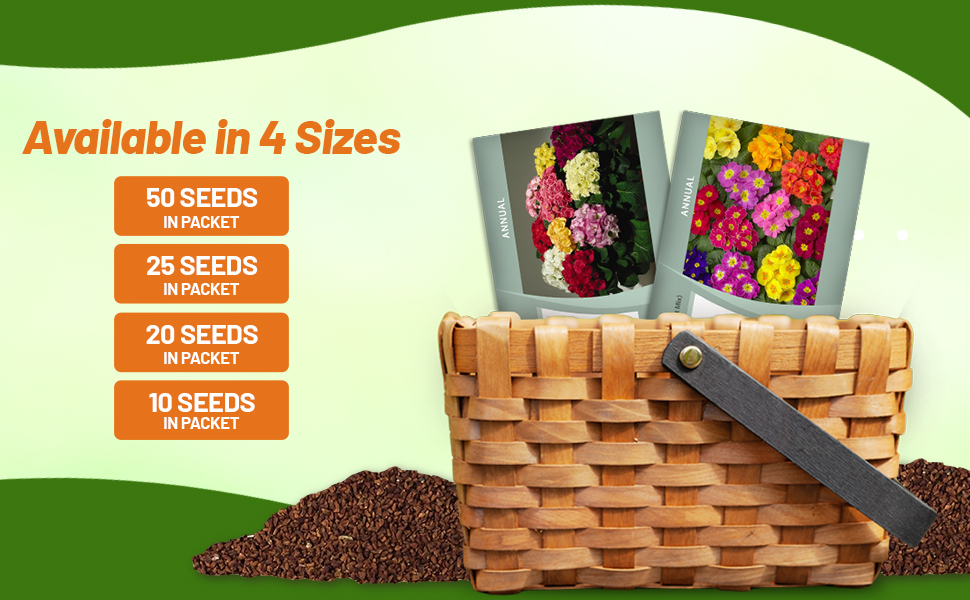
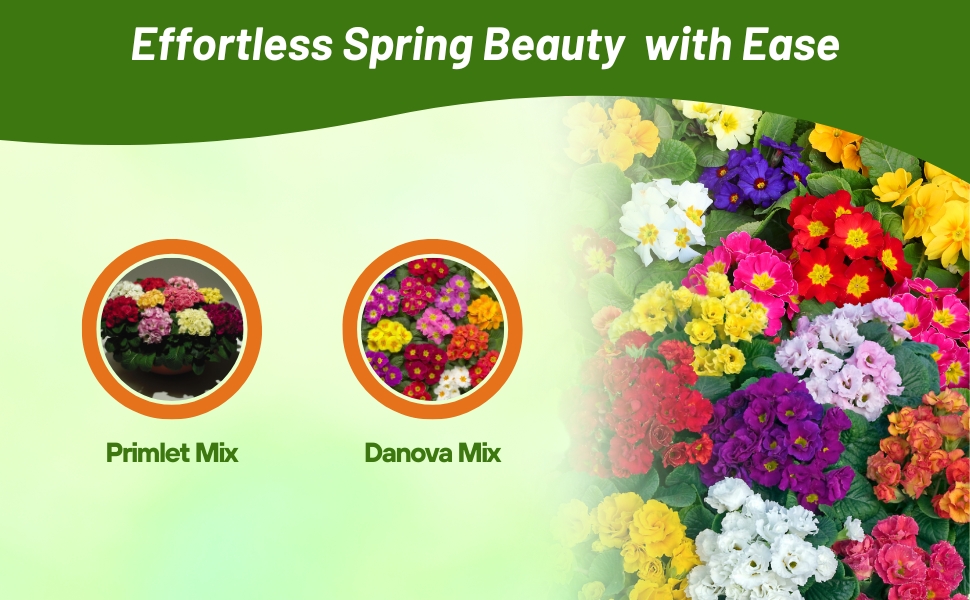
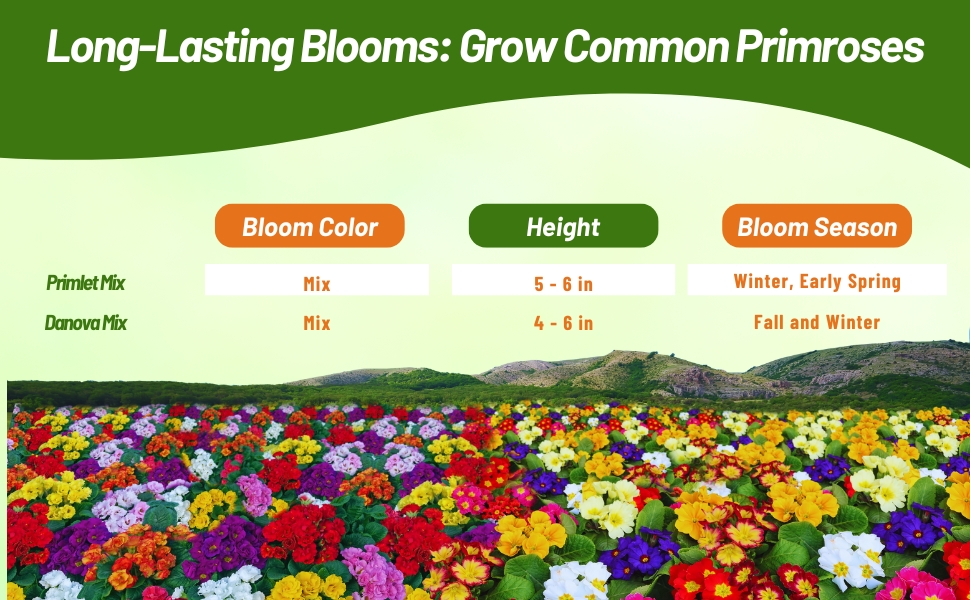

Common Primrose (Primula Acaulis Primlet Mix) - These mounded plants have flowers which look like bouquets of fragrant mini-roses with semi-double blooms. Long-lasting as an indoor house plant; otherwise, typically grown as an annual. Good for pots, borders, woodland settings, edges and windowsills. Low maintenance & frost tolerant and loves to attracts butterflies.
Sow Primrose seeds indoors in late fall or early winter. Use starter trays and a peaty starter mix. Press the Primula seeds into the starter mix but do not cover the flower seeds. Light is beneficial for germination. After the Primrose seedlings get their second or third leaves they can be transplanted to a protected outdoor seedbed or individual pots. Plant out in late winter or early spring. When planting German Primrose into its permanent place, amend the garden soil with plenty of peat moss and use a slow release fertilizer. Space the Primrose plants 8 inches apart in a partially shaded setting.
Common Questions
What are good companion plants for primroses?
Your primroses will complement other shade garden plants like hostas and astilbe.
How long does a primrose plant live?
A primrose can thrive for up to five years with the right conditions.
Where should I place primroses in my house?
Your primrose plant requires bright yet indirect sunlight. Placing it on a bright windowsill facing north provides an ideal location.
Planting Directions
TEMPERATURE
60 - 65F
AVERAGE GERM TIME
21 - 30 days
LIGHT REQUIRED
Yes
DEPTH
Do not cover the seed but press into the soil
SOWING RATE
4 seeds per plant
MOISTURE
Keep seeds moist until germination
PLANT SPACING
7 - 9 inches
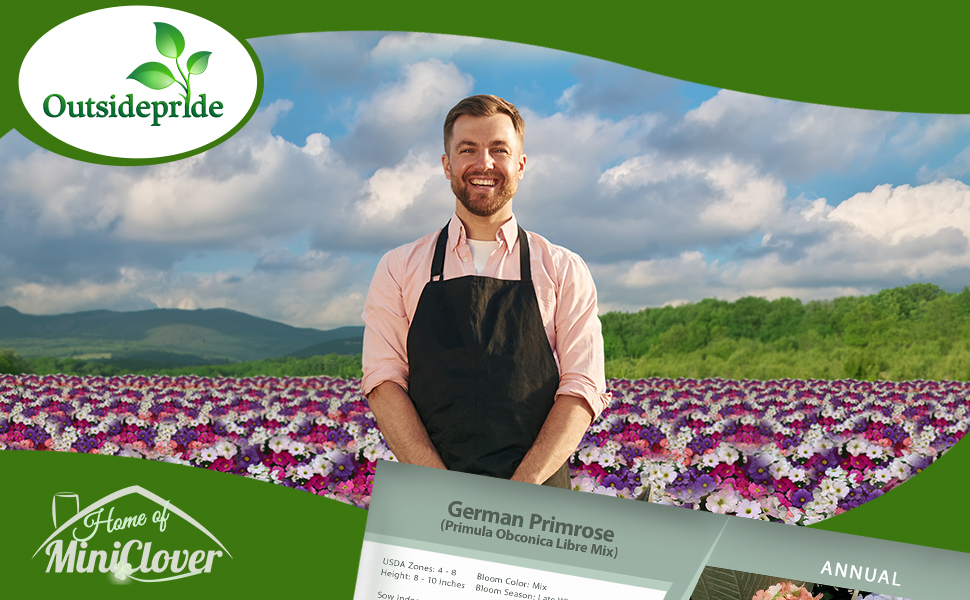
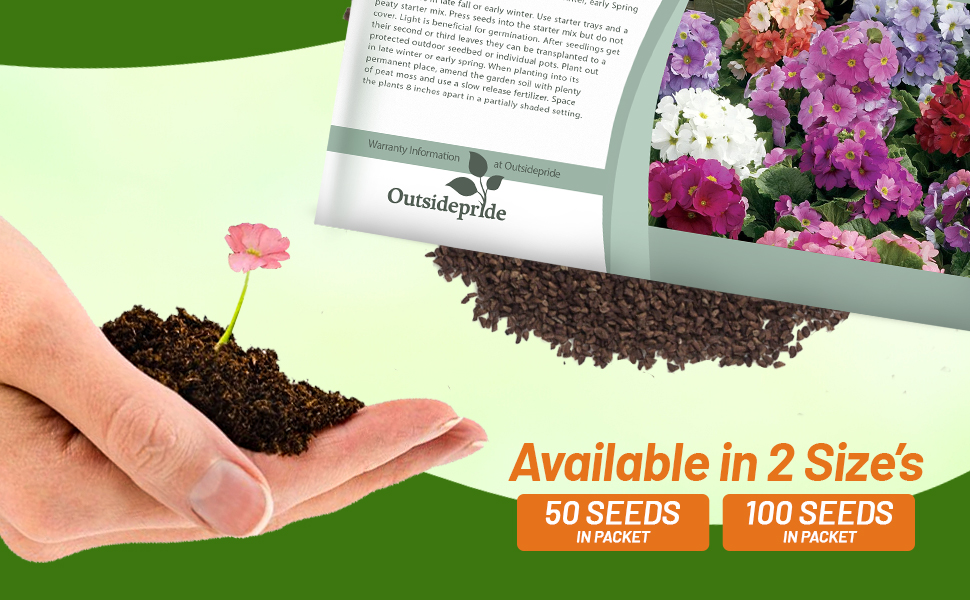
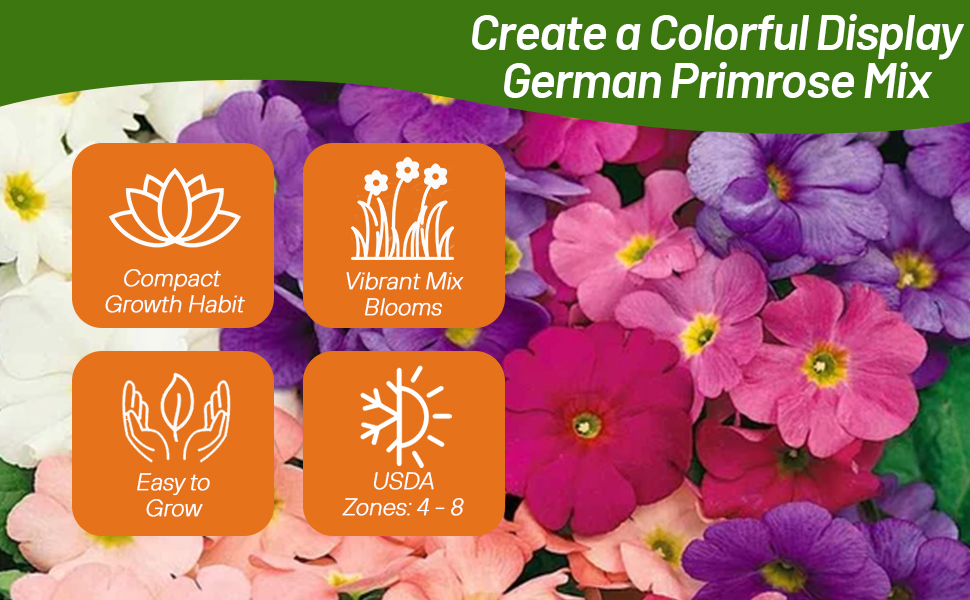

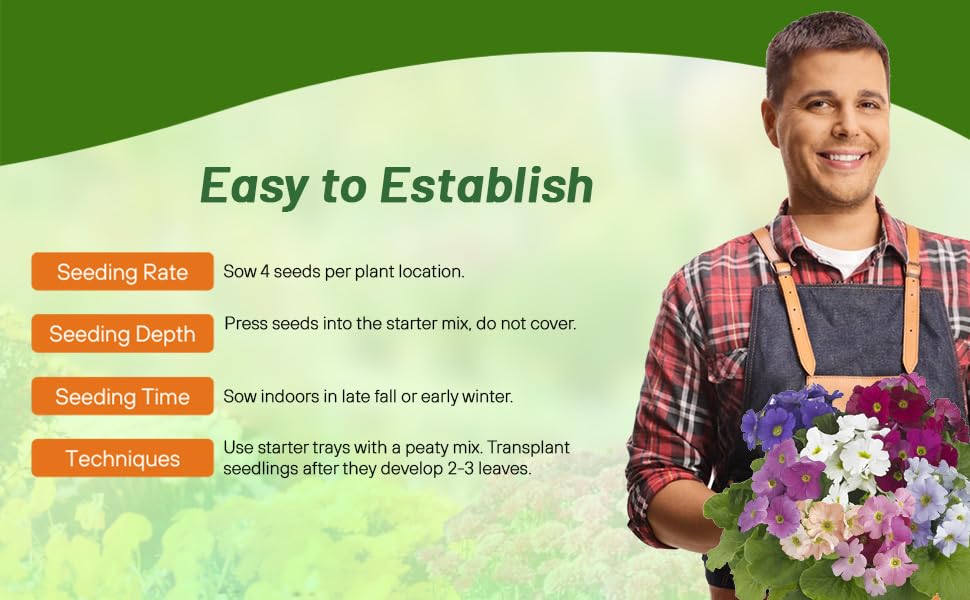
German Primrose (Primula Obconica Libre Mix) - Free-flowering color that lasts. Striking, flowering pot plant with outstanding appeal. Flower color intensifies and deepens as plants mature. Cold temperatures are not necessary to initiate flowering, but cooler growing conditions produce a more compact, free-flowering plant.
Primula obconica bears pink, lilac-blue, red or white flowers, 1 to 2 inches wide, occasionally with slightly frilled edges. This is a rosette-forming, upright, evergreen perennial that is usually grown as an annual. Leaves are somewhat coarse, serrated, oval to heart shaped, to 6 inches long. Good in rock gardens, containers and as a bedding plant. In general, primroses like climates with cool summers.
Sow Primrose seeds indoors in late fall or early winter. Use starter trays and a peaty starter mix. Press the Primula seeds into the starter mix but do not cover the flower seeds. Light is beneficial for germination. After the Primrose seedlings get their second or third leaves they can be transplanted to a protected outdoor seedbed or individual pots. Plant out in late winter or early spring. When planting German Primrose into its permanent place, amend the garden soil with plenty of peat moss and use a slow release fertilizer. Space the Primrose plants 8 inches apart in a partially shaded setting.
Common Questions
What are good companion plants for primroses?
Your primroses will complement other shade garden plants like hostas and astilbe.
How long does a primrose plant live?
A primrose can thrive for up to five years with the right conditions.
Where should I place primroses in my house?
Your primrose plant requires bright yet indirect sunlight. Placing it on a bright windowsill facing north provides an ideal location.
Planting Directions
TEMPERATURE
60 - 65F
AVERAGE GERM TIME
21 - 30 days
LIGHT REQUIRED
Yes
DEPTH
Do not cover the seed but press into the soil
SOWING RATE
4 seeds per plant
MOISTURE
Keep seeds moist until germination
PLANT SPACING
7 - 9 inches
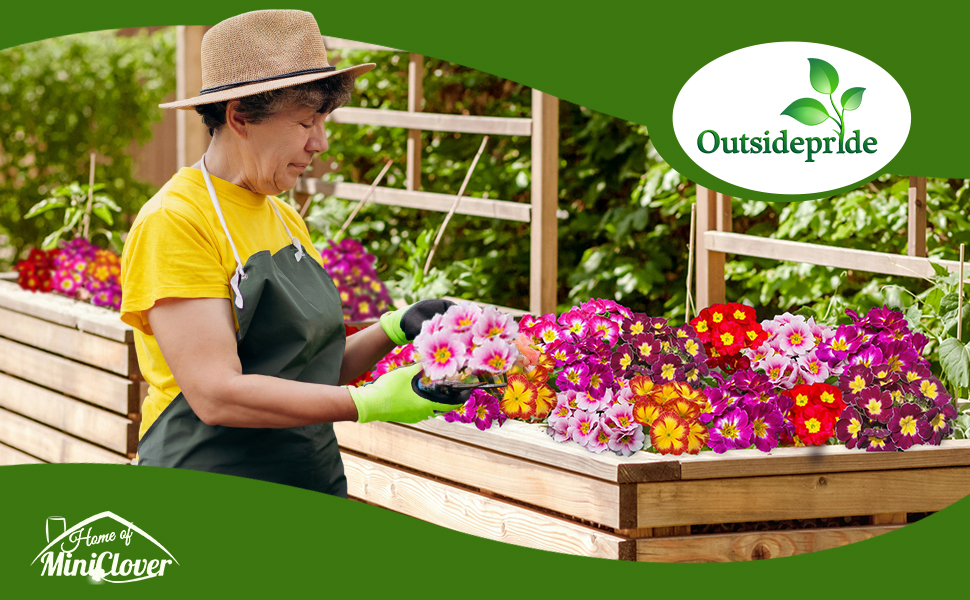


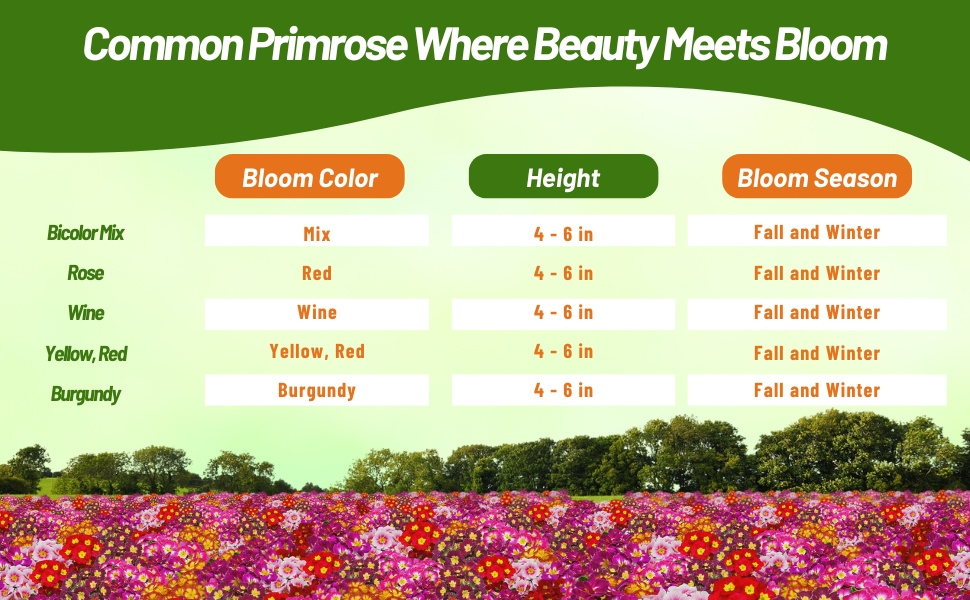

Common Primrose (Primula Acaulis Danova Yellow Red Bicolor) - This flowering primrose with yellow and red bicolor flowers only grows 4 - 6 inches tall. Well matched in flowering time and habit. Well suited for bedding, mixed containers and pot plant use. Early to mid-season type, with 2 to 2 1/2 inch blooms held close to the foliage on compact plants.
Sow Primrose seeds indoors in late fall or early winter. Use starter trays and a peaty starter mix. Press the Primula Acaulis seeds into the starter mix but do not cover the flower seeds. Light is beneficial for germination. After the Primrose seedlings get their second or third leaves they can be transplanted to a protected outdoor seedbed or individual pots. Plant out in late winter or early spring. When planting Common Primrose into its permanent place, amend the garden soil with plenty of peat moss and use a slow release fertilizer. Space the Primrose plants 8 inches apart in a partially shaded setting.
Common Questions
What are good companion plants for primroses?
Your primroses will complement other shade garden plants like hostas and astilbe.
How long does a primrose plant live?
A primrose can thrive for up to five years with the right conditions.
Where should I place primroses in my house?
Your primrose plant requires bright yet indirect sunlight. Placing it on a bright windowsill facing north provides an ideal location.































